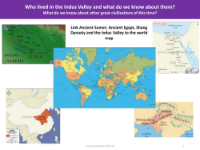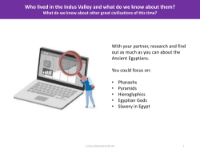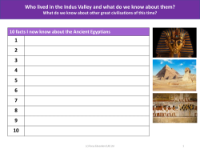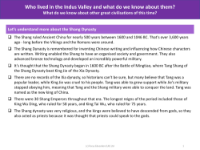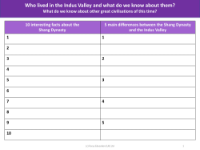Lets understand more about Ancient Sumer - Indus Valley - Year 4
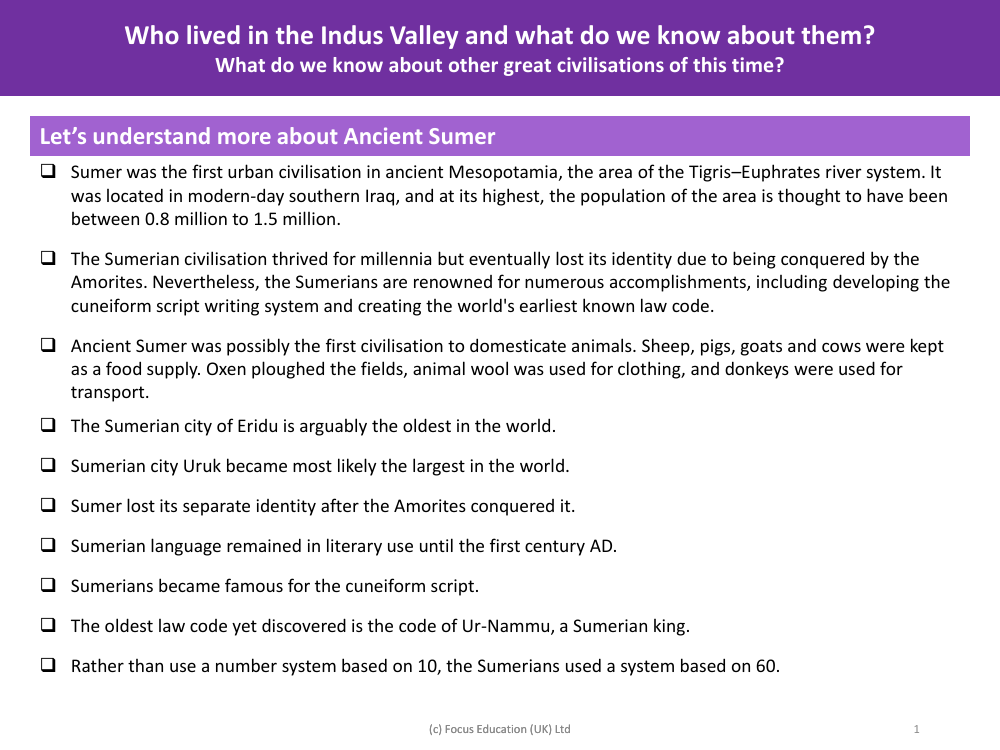
History Resource Description
Ancient Sumer holds the distinguished title of being the first urban civilisation within the fertile region of Mesopotamia, cradled by the Tigris and Euphrates rivers. This pioneering society flourished in what is now southern Iraq, with an estimated population ranging from 0.8 to 1.5 million at its zenith. Despite the eventual loss of its distinct identity following conquest by the Amorites, the Sumerians left an indelible mark on history. They are celebrated for their groundbreaking achievements, such as the invention of cuneiform script, one of the earliest writing systems, and the formation of the world's first known law code.
The Sumerians were also trailblazers in the domestication of animals, with sheep, pigs, goats, and cows integral to their food supply and daily life. Oxen were harnessed to plough fields, wool from animals became a staple for clothing, and donkeys served as a means of transport. Among their cities, Eridu is venerated as potentially the oldest in the world, while Uruk is credited with being one of the largest urban centres of the time. The Sumerian language persevered in literary use up until the first century AD. Their numerical system, based on 60, stands apart from the decimal system commonly used today. The Sumerian civilisation's contributions, such as the cuneiform script and the code of Ur-Nammu, underscore their status as a remarkable and influential ancient culture.


